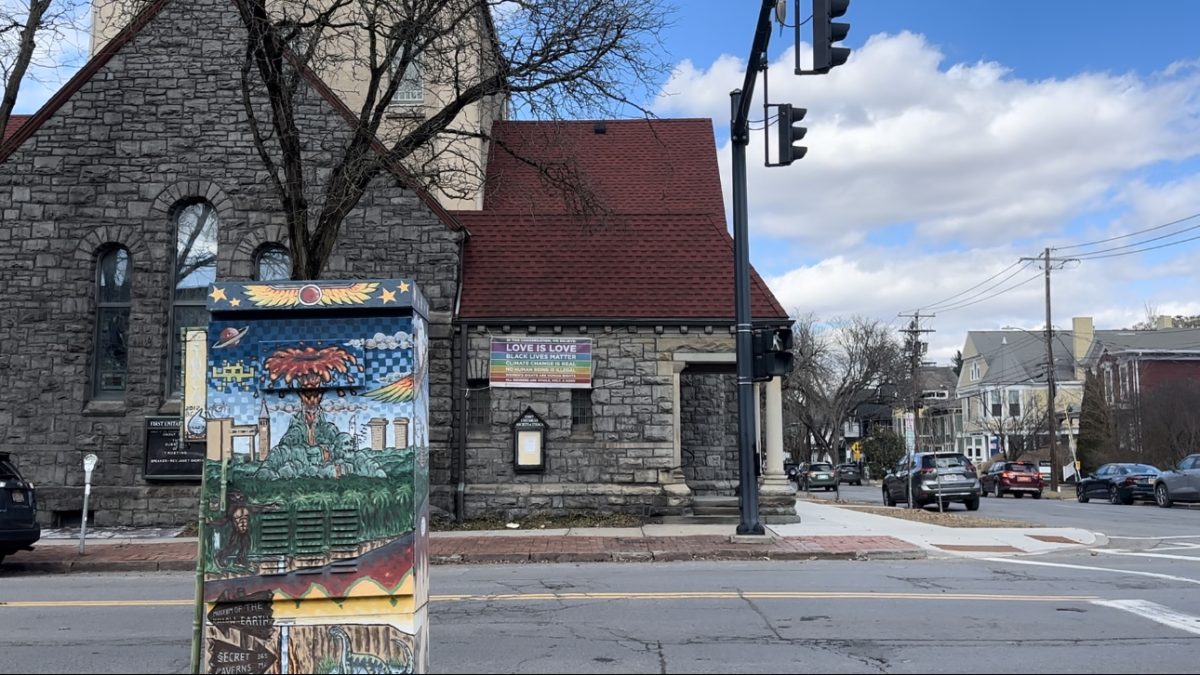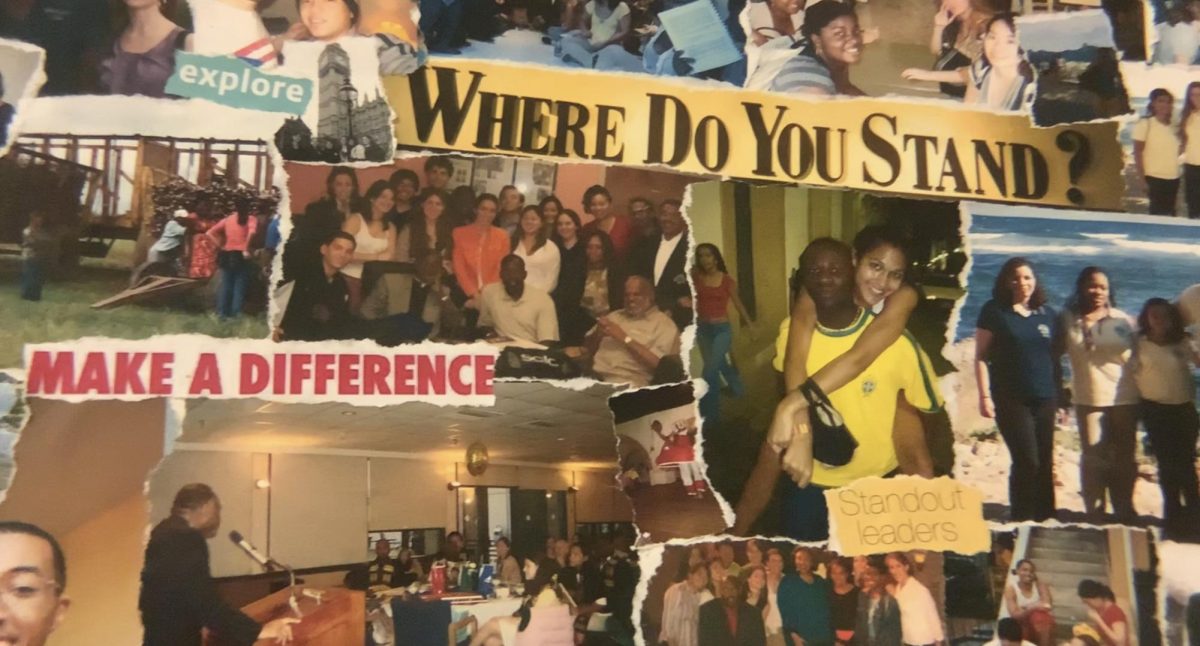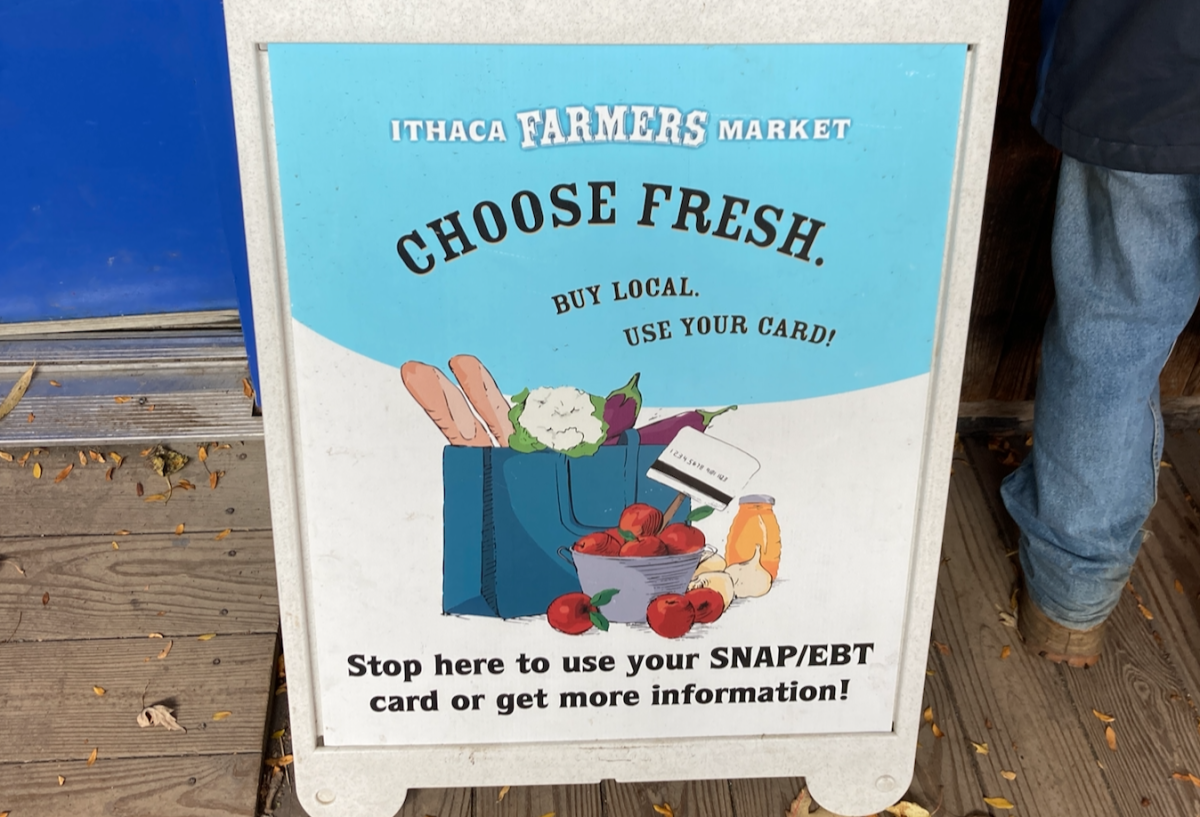
From Nov. 15 to 18, seven Ithaca College students gathered alongside thousands at Nogales, Arizona for the Border Encuentro (border meeting) to mobilize against what they consider to be U.S. militarization and violence on Latin America.
IC senior Joe Anthony Cruz, a son of Mexican immigrants, attended Border Encuentro for the first time.
“I think, one of the most impactful experiences was learning and hearing the names of the people, old and young, male, female, non-binary even, of people that had died trying to cross the border or had been shot down by border patrol agents,” said Cruz.
On Dec. 4, during a campus roundtable discussion about the trip, Cruz spoke about his experience. He explained he initially expected the trip to only involve protesting. He was actually able to attend workshops and vigils, and network with people.
IC students presented their own research–including how climate change will make the Mexican desert uninhabitable for migrants and refugees to cross in 20 years— to high school and college students in Nogales.
“I remember vividly during our roundtable discussion, these high school students really just gave it to us straight: ‘You all are at school in this private little college up in upstate New York. You all don’t know what it’s like to live in Nogales and to see tanks roll by and to wake up because a helicopter is flying across and maybe spraying people with stuff,’” Cruz said.
IC students said the landscape of Nogales includes a 1,951-mile fence that separates the United States from Mexico. The fence this year had additional infrastructure that made it inaccessible to pass things through.
“It used to be these bars you could touch through. People were still passing over posters. Like people still pass food over to relatives. It is somewhat high up. It’s like a grate, a metal grate you can only stick your fingers through,” Cruz said.
Cruz added that one of the most emotionally moving parts of the visit was how participants of Border Encuentro expressed painful and violent aspects of the border through art, parades called “puppetistas,” and music.
“Witnessing it as a documentarian, as a journalist, and also as a child of immigrants myself, I think it was just beautiful to see the solidarity through music,” Cruz said.

Patricia Rodriguez, IC Associate Professor of Politics and Co-Coordinator of Latin American Studies, organized the trip to Nogales. Rodriguez has participated at least seven times with the advocacy organization Schools of Americas Watch (SOA Watch) on these annual gatherings.
SOA Watch was created after a Georgia military training school led a 1989 massacre at the University of Central America in El Salvador. In 2016 the meeting location switched from Georgia to Nogales, Arizona.
SOA Watch wants to stop U.S. initiatives in Latin America including the Merida Initiative and Alliance on Prosperity.
During the roundtable, Rodriguez said she believes these initiatives allow the United States to impose military policies on several Latin American countries. The policies enforced investing in weapons that would help Latin American militaries stop drug wars. As a result, she explained that has caused a number of problems such as illegal gun trade into Mexico and violence on citizens.
“That’s what leads directly to migration. Communities cannot stay because of the violence. And they cannot stay in their lands because they don’t have a means to survive,” Rodriguez said.

One of the results is the migrant caravan, which refers to the thousands of Hondurans, Salvadorians and Guatemalans migrating on foot to the US-Mexico Border to escape the violence from their homes. Rodriguez explained gang crime caused by U.S. militarization in Central America has caused the migrant caravan to grow from a thousand to almost 11,000.
“I think that should be telling us something very important which is that there’s a crisis for sure,” Rodriguez said. “But the crisis isn’t a crisis at the US- Mexico borders, it is a crisis that we need to be examining, it is a crisis in their countries and in their own rural areas that is causing the displacement.”






